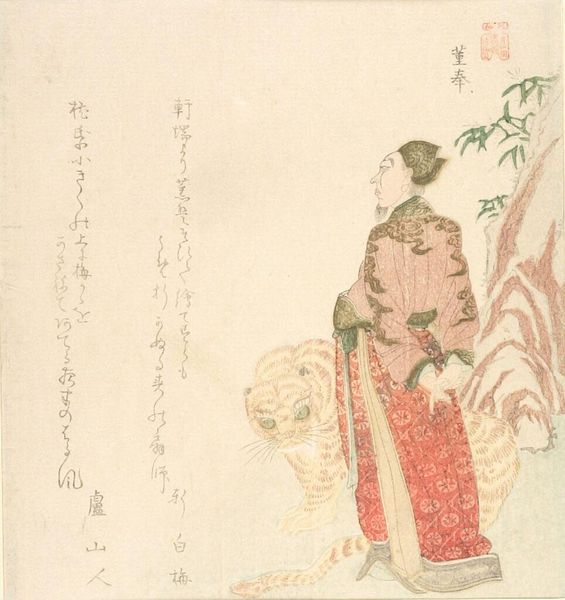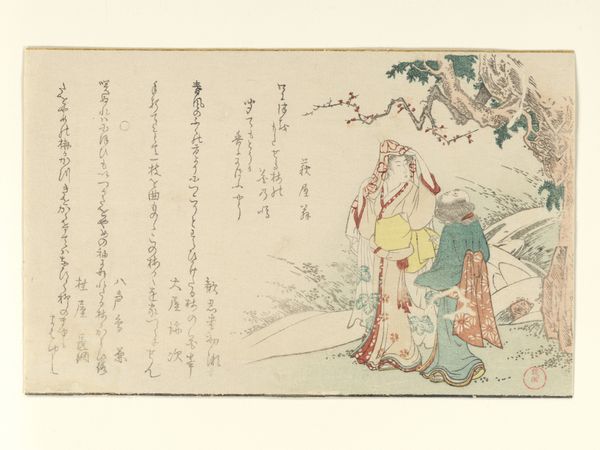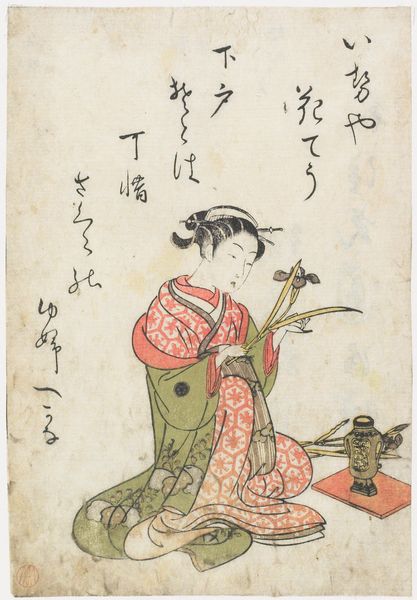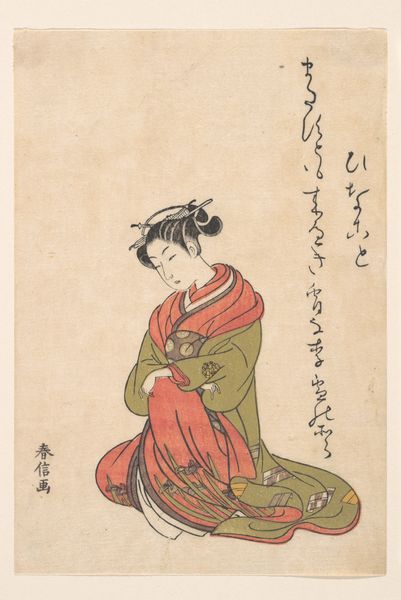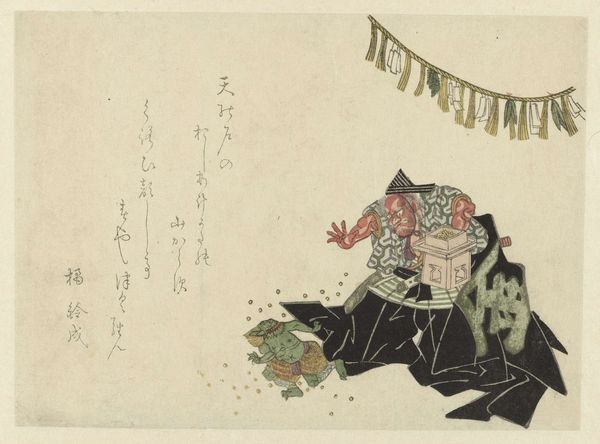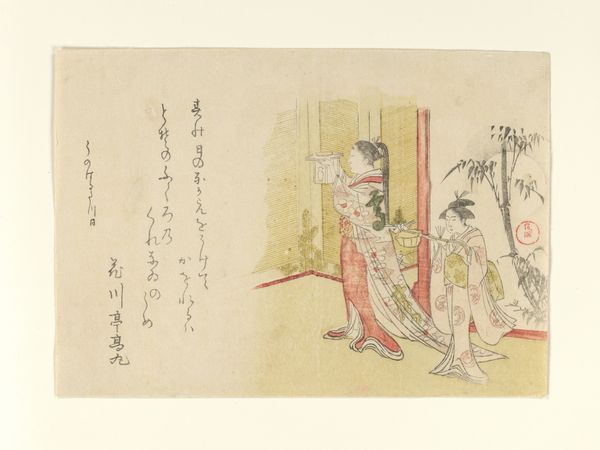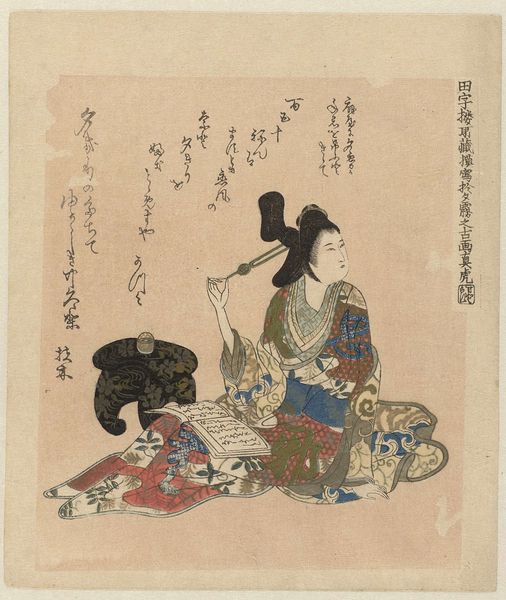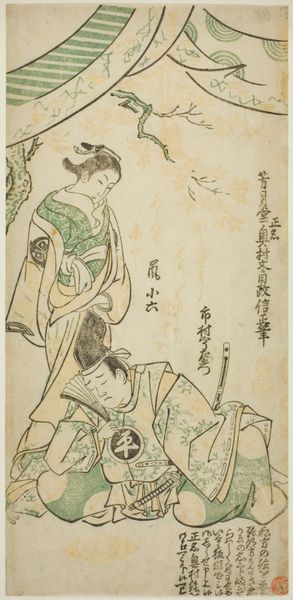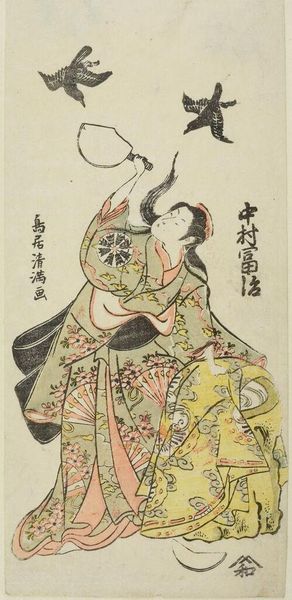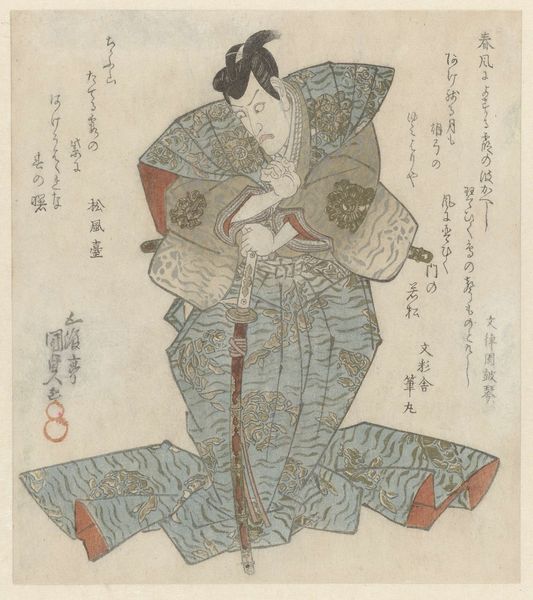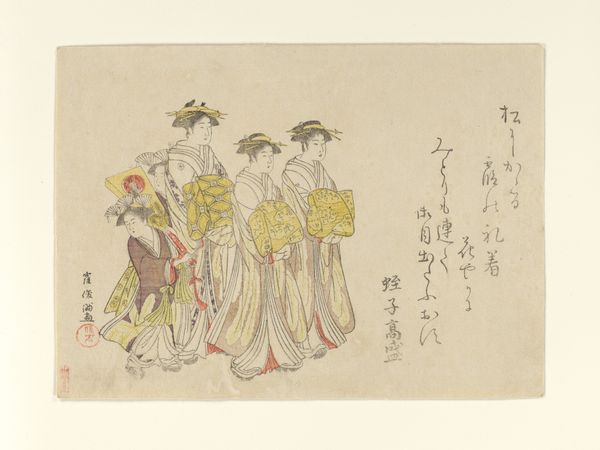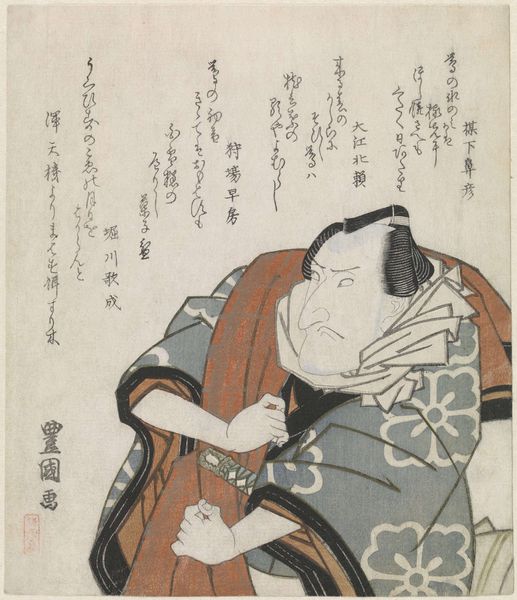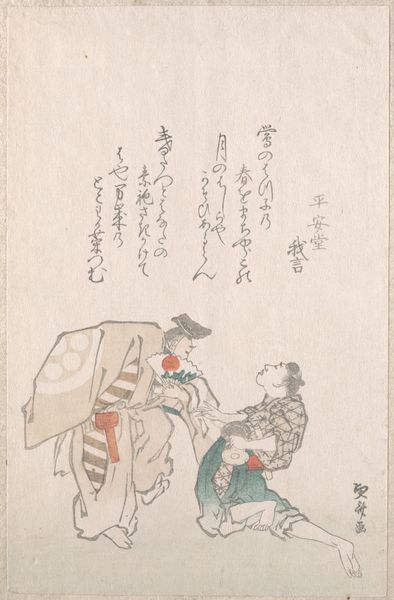
print, woodblock-print
#
narrative-art
# print
#
asian-art
#
ukiyo-e
#
figuration
#
linocut print
#
woodblock-print
#
erotic-art
Dimensions: height 136 mm, width 343 mm
Copyright: Rijks Museum: Open Domain
Curator: This woodblock print at the Rijksmuseum, titled "Minnend paar in feestelijke kleding," or "Loving Couple in Festive Dress" in English, dates from around 1740-1745 and is attributed to Sugimura Jihei. It certainly stands out amidst the collection. Editor: It does indeed! My first impression is one of startling intimacy rendered with delicate lines. There's a rawness in the portrayal that's quite unexpected. Curator: Unexpected perhaps, yet very much a part of the ukiyo-e tradition, "pictures of the floating world." It’s about capturing fleeting pleasures, often of the entertainment districts. Note the couple's rich garments; they tell a story of social status and ritualized interactions. Editor: So the clothing is not merely decorative; it symbolizes societal structures. Are we meant to interpret their coupling as something beyond just personal pleasure, perhaps reflective of societal unions or hierarchies? Curator: Absolutely, dress held tremendous significance. Colors, patterns, even the way the fabric drapes, carry symbolic weight indicating social standing and specific roles. Their union could be a sanctioned form of pleasure within this “floating world," acting as a visual narrative, a symbolic performance almost. Editor: Looking at it through that lens really shifts my perspective. What I initially read as raw becomes formalized, a narrative deliberately constructed through specific visual cues. Does the ladder to the right factor into that narrative? Curator: That ladder may carry complex meanings; we cannot reduce to single certainties. Scholars debate possible links between these "pillow books" to ensure good fortune, happiness and harmony in sexual encounters, as erotic playthings, so there could also be humorous implications or satire depending on what ladder meant within this period! Editor: Fascinating, a blend of frank representation with encoded social commentary and potential religious connections makes me reassess this small unassuming woodcut which expands into this era where many themes have cultural overlaps. It asks for more from us that’s readily there. Curator: Exactly, and that constant questioning is one of the rewards from interpreting images embedded within social-cultural histories, I agree that art invites viewers engage actively for fuller engagement rather just accept surface information displayed across centuries.
Comments
No comments
Be the first to comment and join the conversation on the ultimate creative platform.
